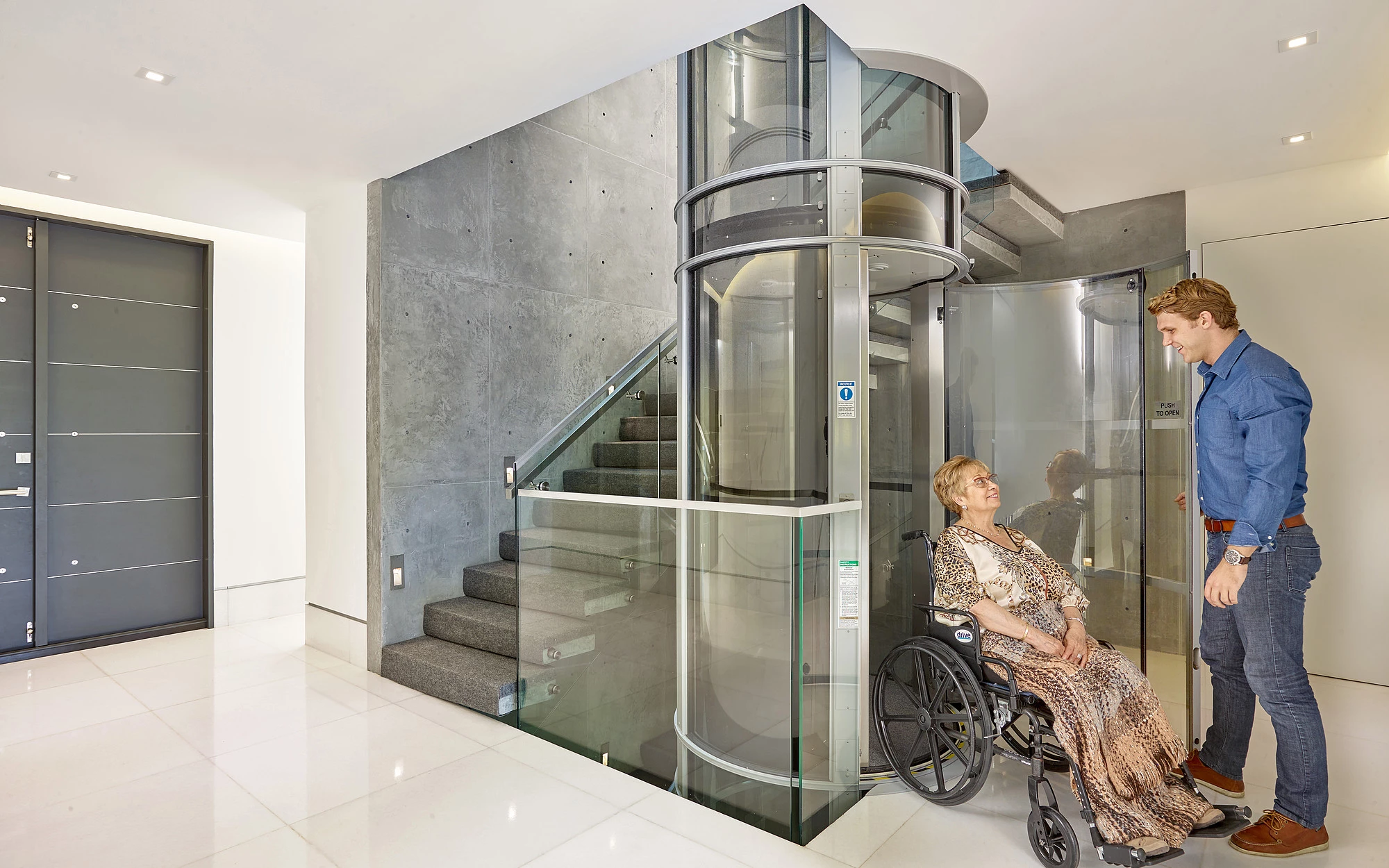With over five decades of industry experience since our establishment in 1972 in India, we've redefined elevators as more than just transportation. As we expand our legacy to Dubai, our portfolio boasts successful elevator installations and maintenance projects.

In a nation known for its opulent lifestyle and magnificent architecture, providing accessibility for people with disabilities is becoming more and more important. Wheelchair-accessible home elevators are becoming a vital alternative, offering a practical and secure way to move around residential areas. The benefits, types, installation procedure, and factors to consider when selecting the best option are all covered in this in-depth article about home elevators in the United Arab Emirates.
With wheelchair lifts, the drive and control systems are housed inside the lift tower or cab assembly, making them self-contained lifts. Although they can travel 12 feet vertically, they are typically used for low-rise applications, such as decks or porches.
People with impairments, accidents, or the elderly can benefit greatly from wheelchair lifts when entering and exiting their homes. They are available in an array of designs and dimensions, but they are all designed to facilitate simpler, safer mobility. In addition to being able to be installed outdoors unenclosed to a deck or landing, wheelchair lifts can also be installed indoors with a hoistway.
Wheelchair lifts are designed primarily for practical reasons and can be a cost-effective substitute for residential elevators. They function similarly to residential elevators in that they move people between floors of their homes. Despite being a fantastic option for people with mobility issues or anyone who needs easy access between two levels, wheelchair lifts are frequently disregarded during the planning stage of home lift installations.
Although wheelchair lifts seem more utilitarian, they provide dependable assistance and are made to accommodate the majority of common wheelchair models. This Savaria lift, a hydraulic model V-1504, is installed inside a house and has a 3' by 4' platform. It is displayed in a 2-stop hoistway.
When wheelchair lifts are installed inside homes, they can be placed inside hoistways that comply with local codes or come with enclosures made at the factory. The ASME A18.1 standard is met by the majority of platform lift construction. This vertical wheelchair lift operates in a hoistway, serving two stops. No separate machine room is needed because all mechanical parts are conveniently located within the lift tower for easy maintenance.
A wheelchair lift's controls are user-friendly and customizable. The majority will have an emergency stop button that emits an audible signal when activated, as well as push-and-hold or constant pressure buttons for the direction controls. Also useful for getting into and out of the elevator is the platform grab bar.